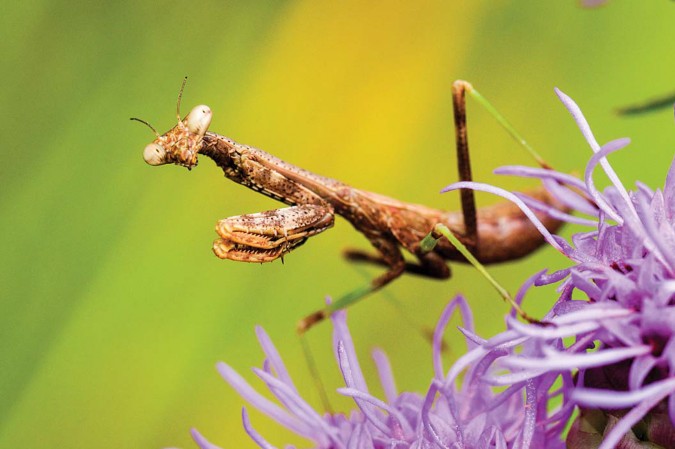
By Chris Helzer
In Nebraska, there are three species of large praying mantises (and a few smaller “ground mantids” in the western part of the state). Of those three large species, the biggest is the Chinese mantis (Tenodera sinensis), which can reach lengths of 4½ inches.
The Chinese mantis is an introduced species to North America and Nebraska, along with its smaller colleague, the European mantis (Mantis religiosa).
The Carolina mantis (Stagmomantis carolina) is native to Nebraska and is the smallest of the three, only reaching lengths of a little more than 2 inches. All three can be variable in coloration, but are usually found in combinations of green, gray and/or brown.
The Chinese mantis was first introduced to the United States near Philadelphia in 1896. It is now found in much of North America, from Nebraska eastward. It has been commonly introduced in various locations for pest control. However, its effectiveness in that role is limited, and potentially even counterproductive.
Mantises are certainly extremely capable predators, but they don’t typically occur in sufficient abundance to control outbreaks of pest insects. In addition, they are just as likely to kill and eat insects such as bees, butterflies and other species gardeners and farmers would like to keep around. It’s not clear whether or not Chinese mantises have any negative impact on populations of the native Carolina mantis or other insects.
Because of their size and fighting ability, praying mantises have relatively few enemies among their insect peers.
However, they can be caught and eaten by vertebrates such as frogs, lizards and birds, as well as invertebrates such as ants and spiders. In its native Asian range, the big Chinese mantis is hunted by the appropriately named Asian giant hornet, the largest hornet in the world.
